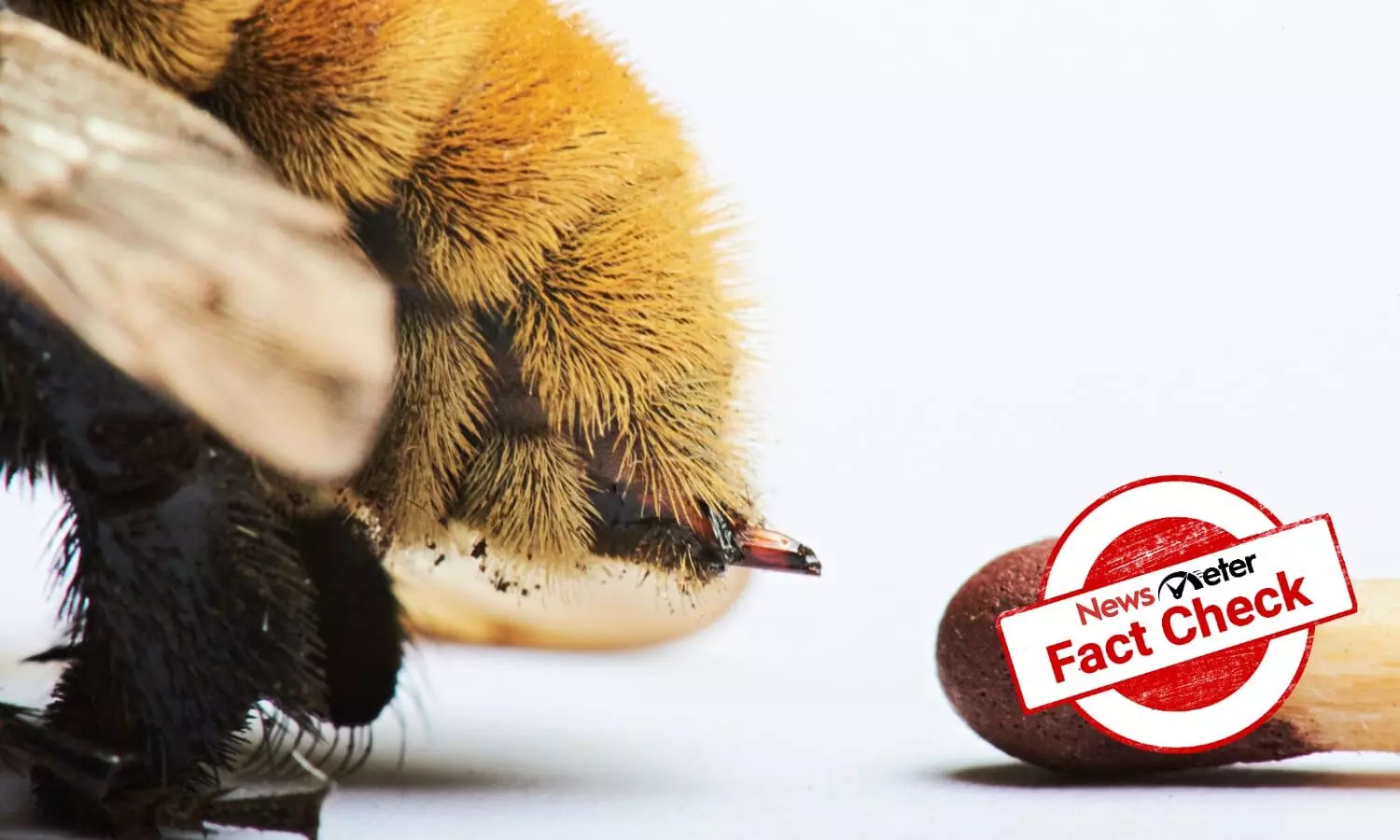Can a bee sting cure HIV?
A video claiming that a bee sting can cure HIV has gone viral on social media.
By Sunanda Naik
Hyderabad: A video claiming that a bee sting can cure HIV has gone viral on social media. The caption states, “Bee venom contains a toxin that can destroy HIV and tumors.”
Text appearing in the video reads, “A toxin found in bee venom can destroy HIV while leaving normal cells unharmed. The toxin damages the protective outer layer of human immunodeficiency virus (HIV).”
Fact Check
NewsMeter found the claim to be misleading.
According to the Centers for Disease Control and Prevention, “HIV (human immunodeficiency virus) is a virus that attacks the body’s immune system. If HIV is not treated, it can lead to AIDS (acquired immunodeficiency syndrome).”
It added, “There is currently no effective cure. Once people get HIV, they have it for life.”
CDC further said that with proper medical care, HIV can be controlled. “People with HIV who get effective HIV treatment can live long, healthy lives and protect their partners,” it added.
According to Barnes Jewish Hospital, “Nanoparticles carrying a toxin found in bee venom can destroy human immunodeficiency virus (HIV) while leaving surrounding cells unharmed. This finding is an important step toward developing a vaginal gel that may prevent the spread of HIV, the virus that causes AIDS.”
It further added, “Bee venom contains a potent toxin called melittin that can poke holes in the protective envelope that surrounds HIV and other viruses. Large amounts of free melittin can cause a lot of damage.”
But the problem with melittin overdose is it can also harm the essential cells as well.
An article in The Source explained, “Since melittin attacks double-layered membranes indiscriminately, this concept is not limited to HIV. Many viruses, including hepatitis B and C, rely on the same kind of protective envelope and would be vulnerable to melittin-loaded nanoparticles.”
But, the point here is that while this compound is a component of bee venom, the delivery of that compound is a specifically engineered nanoscale process. It should also be noted that these studies didn’t even use melittin from an actual bee, but instead used a synthetic version — so being stung by live bees will in no way afford one protection against HIV.